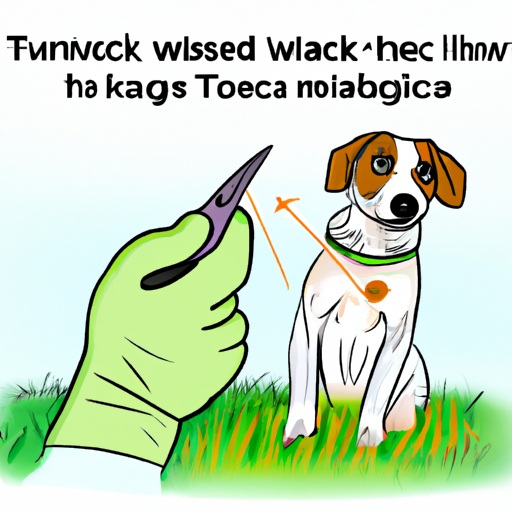As a caregiver, your dog’s health and happiness are a top priority. One common and potentially dangerous issue that dogs face is ticks. These pesky parasites can pose a serious threat to your furry friend, as some ticks carry diseases like Lyme disease. This guide will walk you through the process of safely removing ticks from your dogs, using a clear, step-by-step process.
H2: Understanding The Threat of Ticks
Ticks are more than just annoying pests. They can carry serious diseases that can affect both your dog and you. It’s important to understand the risks and take precautions to protect your furry friend from these parasites.
-
Lyme disease is potentially the most well-known disease carried by ticks. It can cause fever, loss of appetite, painful joints, and lethargy in dogs.
-
Anaplasmosis is another disease ticks can transmit. Symptoms include joint pain, high fever, and nervous system disorders.
-
Ehrlichiosis is also transmitted by ticks and can cause weight loss, fever, and bleeding disorders.
H2: Preventing Ticks
The best way to deal with ticks is to prevent them from attaching to your dog in the first place. Here are some steps you can take to prevent ticks:
-
Use tick prevention products: There are many products available that can repel and kill ticks. These include tick collars, spot-on treatments, and oral medications.
-
Keep your yard tick-free: Ticks live in tall grass, brush, and wooded areas. By keeping your lawn mowed and bushes trimmed, you can reduce the risk of ticks.
-
Regularly check your dog for ticks: After a walk in the park or a day spent outside, thoroughly check your dog for ticks. Pay close attention to areas like the ears, groin, and armpits.
H2: How to Remove Ticks
If you find a tick on your dog, it’s important to remove it as soon as possible. Here’s a step-by-step guide on how to do it:
-
Wear gloves: This can protect you from potentially infectious materials.
-
Use a pair of tweezers: Grasp the tick as close to the dog’s skin as possible.
-
Pull out the tick: Gently pull outward without twisting or crushing the tick.
-
Dispose of the tick: Place the tick in a sealed bag, flush it down the toilet, or submerge it in alcohol.
-
Clean the bite area: Use a mild soap and warm water, then apply an antiseptic.
H2: Aftercare and Monitoring
After removing the tick, keep an eye on your dog for signs of illness. If you notice any symptoms such as fever, loss of appetite, lethargy, or swelling and redness in the area of the tick bite, contact your vet immediately.
| Symptoms | Action |
|---|---|
| Fever | Contact your vet |
| Loss of appetite | Contact your vet |
| Lethargy | Contact your vet |
| Swelling or redness at the tick bite | Contact your vet |
FAQ
Q: Can I remove a tick with my fingers?
A: It’s not recommended as you could potentially squeeze the tick, causing it to release infectious material.
Q: What should I do if the tick’s head is still in my dog?
A: If you can’t remove it easily with tweezers, leave it and let your vet take care of it.
Q: How long does it take for tick-borne diseases to show symptoms?
A: It can take several days to weeks for symptoms to appear.
Q: Can I catch a disease from a tick on my dog?
A: Yes, ticks can transmit diseases to humans as well. Always handle ticks with care.
Q: How can I prevent ticks on my dog?
A: Regularly use tick prevention products, keep your yard tick-free, and check your dog for ticks regularly.



